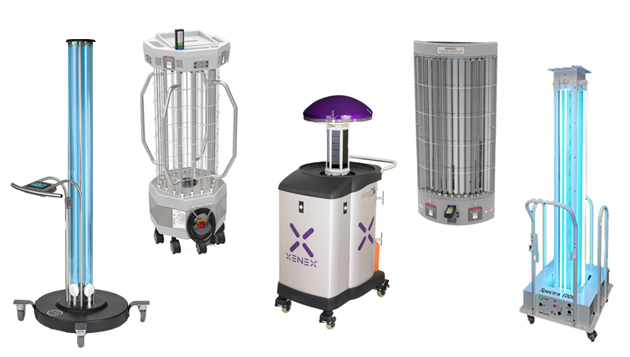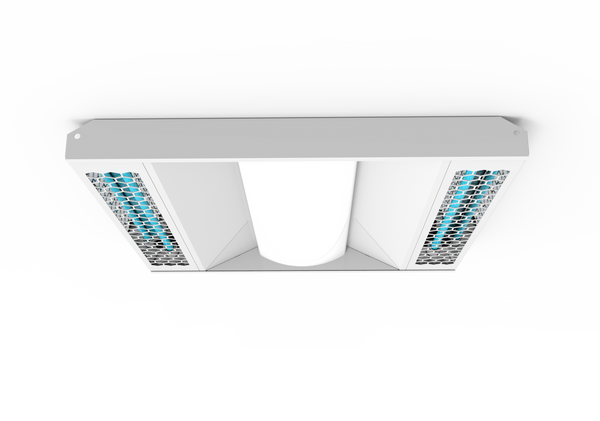UV Sanitation: The Cutting-Edge Innovation Changing Cleanliness Practices
In the realm of hygiene techniques, one modern technology has arised as a game-changer: UV disinfection. From medical care setups to food processing, UV sanitation is making its mark in different industries.
Just How UV Sanitation Functions
UV sanitation functions by using ultraviolet light to destroy or suspend bacteria, providing a very reliable and chemical-free approach of hygiene. This modern technology takes advantage of the power of short-wavelength UV-C light, which is capable of harming the DNA and RNA of microorganisms, hence providing them not able to reproduce and create damage.
The procedure starts with the installation of UV sanitation systems, which contain UV lights that emit UV-C light. These lamps are purposefully placed in areas where microbial contamination is a problem, such as water treatment plants, health centers, labs, and food processing centers.
When microbes are exposed to UV-C light, the photons penetrate their cell walls and get to the DNA and RNA within. The high-energy UV-C photons interrupt the genetic material by producing bonds in between nearby nucleotides, resulting in the development of thymine dimers. These dimers protect against the microorganisms from duplicating, making them safe.
UV disinfection is extremely reliable against a wide variety of microbes, consisting of viruses, parasites, and germs. It is particularly effective against waterborne virus like E. coli, Giardia, and Cryptosporidium. UV sanitation is a chemical-free approach, eliminating the demand for potentially unsafe anti-bacterials and lowering the risk of damaging disinfection by-products.
Benefits of UV Sanitation
UV sanitation offers numerous benefits in the field of hygiene, making it a highly favored technique for efficiently eliminating unsafe bacteria. Unlike conventional disinfection methods that count on chemicals, UV disinfection makes use of ultraviolet light to damage the DNA of bacteria, providing them not able to replicate and create infections.

UV sanitation is likewise very flexible in its applications. It can be made use of in various settings, including hospitals, institutions, food handling facilities, and water therapy plants. UV sanitation systems can be easily integrated into existing hygiene practices, giving an extra layer of defense against transmittable illness.
In addition to its efficiency and convenience, UV sanitation is also environmentally friendly. It does not generate any type of harmful results or residues, making it a lasting and safe approach for hygiene - uv surface disinfection. Moreover, UV disinfection requires marginal upkeep and has a long lifespan, resulting in cost savings over time.
UV Disinfection in Medical Care Settings
In medical care settings, UV disinfection has actually emerged as a cutting-edge method for successfully getting rid of hazardous microbes. UV sanitation works by sending out ultraviolet light at a particular wavelength that is deadly to bacteria, infections, and various other microbes.
Firstly, UV sanitation is a non-chemical technique, making it an eco-friendly alternative compared to conventional sanitation approaches that typically involve using harsh chemicals. The usage of UV light gets rid of the requirement for chemical anti-bacterials, lowering the risk of unsafe residue or chemical exposure to both clients and healthcare workers.
Furthermore, UV sanitation is highly reliable in eliminating a large range of microbes, consisting of drug-resistant germs such as MRSA and C. difficile. It offers a trustworthy and regular sanitation process, guaranteeing that all surface areas and equipment are extensively decontaminated, even in hard-to-reach areas.
UV Sanitation in Food Handling
The application of UV sanitation expands beyond health care settings and locates considerable value in the realm of food processing. uv surface disinfection. UV sanitation technology is becoming increasingly prominent in the food sector due to its ability to properly get rid of damaging microorganisms and enhance food safety and security
One of the main advantages of UV sanitation in food handling is its ability to target a large range of microorganisms, including infections, mold and mildews, and germs. By making use of UV light at certain wavelengths, it is possible to disrupt the DNA and RNA of these microorganisms, rendering them not able to trigger or replicate damage. This modern technology can be applied to different stages of the food handling chain, consisting of surface disinfection, equipment sanitation, and water treatment.
UV disinfection gives a non-thermal and chemical-free approach of sterilizing foodstuff. Unlike typical sanitation methods that count on chemicals or heat, UV modern technology does not leave any kind of residue or alter the taste, appearance, or nutritional worth of the food. This makes it an excellent service for industries that need strict adherence to high quality requirements.
In addition, UV sanitation systems are easy to mount and operate, requiring minimal upkeep. They can be incorporated right into existing handling lines without causing substantial interruptions to the manufacturing process. In addition, UV systems have a quick treatment time, enabling constant processing and minimizing downtime.
The Future of UV Disinfection

One location where UV disinfection is expected to make considerable innovations is in the field of health care. With the surge of antibiotic-resistant bacteria and the need for more efficient disinfection techniques, UV light has the prospective to play an important duty in reducing healthcare-associated infections. see this site UV disinfection systems can be made use of to sanitize surface areas, tools, and also the air in medical care centers, aiding to stop the spread of dangerous virus and enhance individual security.
One more industry that could profit from developments in UV disinfection technology is the food sector. UV light has actually currently proven to be an effective technique for decontaminating food and lowering the risk of foodborne health problems. As technology boosts, we can anticipate to see more reliable and affordable UV disinfection systems being implemented in food processing plants, guaranteeing that the food we eat is risk-free and without harmful microorganisms.
Final Thought
In conclusion, UV sanitation is a sophisticated innovation that is transforming hygiene methods in medical care settings and food processing. By using UV light to kill or shut off microorganisms, it supplies various advantages such as efficiency, effectiveness, and security. With recurring innovations in this area, UV sanitation holds excellent possible for the future of hygiene, supplying a lasting and reliable service for keeping tidy and hygienic environments.
UV sanitation is a chemical-free approach, eliminating the requirement for possibly unsafe disinfectants and lowering the risk of unsafe sanitation spin-offs.
Unlike typical disinfection methods that count on chemicals, UV disinfection utilizes ultraviolet light to damage the DNA of microbes, making them incapable try this out to replicate and trigger infections. Unlike typical disinfection techniques that count on chemicals or warmth, UV modern technology does not leave any kind of deposit or modify the preference, appearance, or dietary worth of the food. As technology enhances, we can anticipate to see more affordable and efficient UV disinfection systems being implemented in food processing plants, making sure that the food we eat is secure and totally free from damaging microorganisms.
In conclusion, UV disinfection is a cutting-edge modern technology that is transforming sanitation practices in medical care settings and food handling.
Comments on “Future-Proofing Your Area: Incorporating UV Surface Disinfection for Ongoing Security”